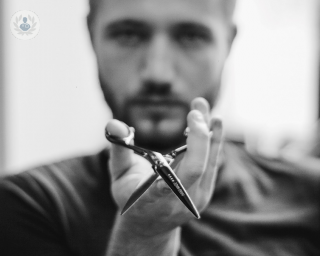Foreskin problems
Mr Nav Johal - Paediatric urology
Created on: 02-20-2018
Updated on: 04-25-2023
Edited by: Conor Lynch
What is foreskin and what are the most common foreskin-related problems?
The foreskin is a layered fold of skin which covers and protects the end of the penis in uncircumcised children and adults. While the foreskin does not need any special care in infancy or early childhood, later on in life it is important to correctly wash and care for the foreskin in order to prevent problems. Problems can include swelling, infection, tightness, irritation, and dryness.

What are the causes of foreskin problems?
In young children, the foreskin is attached to the head of the penis by a membrane called the synechia. Over time, this membrane naturally dissolves. Until this membrane has dissolved, the foreskin should not be forced back or pushed back until it naturally happens – young boys usually discover they can do this by themselves.
In some cases, the foreskin may not be able to be pulled back, caused by something called phimosis. This occurs when the opening of the foreskin is too small and it cannot be properly retracted. The foreskin should start to retract between the ages of two and six – before that, it’s not usually a cause for concern. In babies, if the foreskin is red and swollen, this could be connected to nappy rash or an infection.
In teenagers and adults (those whose foreskin is able to be pulled back) problems can be caused by a number of triggers, including STIs, infection (such as balanitis or thrush), or injury. It is important to note the signs of foreskin problems so your doctor can correctly determine the cause.
What are the signs of problems with the foreskin?
Signs of problems with the foreskin include:
- pain during urination
- itchiness or a rash
- inability to pull back the foreskin
- pain during intercourse
- redness
- soreness
- swelling of the penis
- dryness
- split or bleeding skin
Visit a doctor to have your symptoms related to problems with the foreskin checked and investigated.
How are foreskin problems treated?
Treatment for foreskin problems depend on the issue with the foreskin itself. Dryness, for example, can be managed with creams, lotions, or ointments as indicated by your doctor, or through oral medication. Other problems, such as balanitis, can be treated with medication and creams.
In some cases in children, such as with phimosis, a procedure may be performed to move back the foreskin. In certain cases, usually in adults, circumcision may be performed if the foreskin is causing issues. This is only performed in cases where it is deemed medically necessary. There is no medical need for routine circumcision in children.
Can foreskin problems be prevented?
It is important to properly care for the foreskin in order to reduce the chances of foreskin problems developing. In order to help prevent foreskin problems, you should do the following:
- change your underwear regularly
- wear loose underwear, which allows for circulation of air
- avoid hygiene products which are heavily or artificially scented
- regularly clean your foreskin, washing daily with warm water, and cleaning underneath the foreskin
- use protection during sex to reduce the risk of catching an STI and avoid unwanted bacteria
Which specialist treats foreskin problems?
A urologist treats and manages conditions affecting the male reproductive system. In children, a paediatric urologist is usually consulted.
When and how can I get my foreskin removed completely?
If the patient is experiencing pain or other frequent problems when urinating, then surgical removal/circumcision will be considered.
When should you call a doctor for foreskin problems?
Patients should seek medical advice for their foreskin problems if they notice the following:
- difficulty urinating;
- burning sensation when urinating;
- foreskin progressively become more painful;
- they cannot return the foreskin to its original position.
Is there an age limit on who can be circumcised?
No. Any men of any age can be circumcised.















